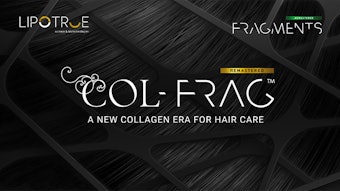The isoamyl ester of p-methoxycinnamic acid is a well-established sunscreen that is produced via chemical synthesis in relatively large quantities. This compound is a very efficient UVB absorber; it absorbs in the range 280–320 nm. Also known as amiloxate, it is used in cosmetic products sold in Europe, Africa, South America, Australia and Asia. Its use in the United States is awaiting approval by the U.S. Food and Drug Administration.
A decade ago, internal marketing considerations at Symrise GmbH & Co. made it necessary to develop a production process for a natural version of this material. At that time, there were neither regulations nor general agreement on the definition of natural cosmetic ingredients made via biotechnology. For this reason, the company decided to adhere to the strict rules and regulations valid for the synthesis of natural flavor compounds via biotechnology. This meant that the biotechnological process had to be performed using natural substrates and only physical procedures could be used for the isolation and purification of the final product.
Preliminary literature studies showed that the ethyl ester of p-methoxycinnamic acid is a major constituent of the essential oil of rhizomes of Kaempferia galangal. The rhizomes of this plant (family: Zingiberaceae) are used throughout Southeast Asia for food flavoring and also in traditional medicine as well as in perfumery. Internal analytical work was successful in also showing the presence of the isoamyl ester in small quantities in the rhizomes, thereby proving for the first time that this compound also occurs in nature.
It was therefore decided to investigate whether the naturally occurring ethyl ester could undergo efficient enzymatic conversion into the corresponding isoamyl ester via lipase catalysis using natural isoamyl alcohol as reactant.

![Lead Image2 [nas] 800x450px](https://img.cosmeticsandtoiletries.com/files/base/allured/all/image/2024/10/Lead_image2__NAS__800x450px.6704042d635b8.png?auto=format%2Ccompress&fit=crop&h=191&q=70&w=340)








